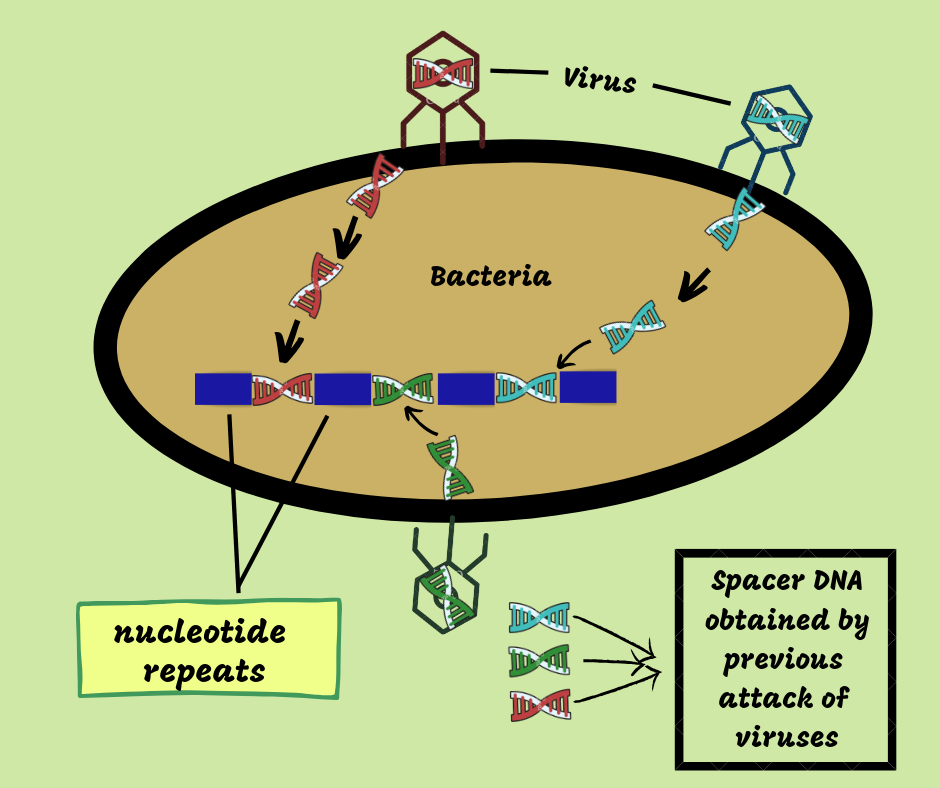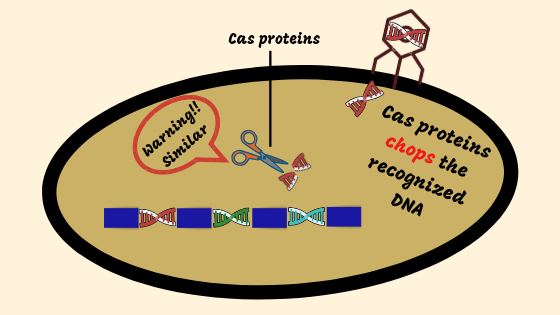It is a series on CRISPR till today. It is recommended to read the previous articles, if you didn’t, this is the link sciteum.com/2019/09/crispr-till-today-the-basic-structure-of-crispr.
CRISPR/Cas systems have been classified into three distinct types:
- Type I
- Type II
- Type III
Types I and III are found in both bacteria and archaea, type II is unique to only bacteria.
Bacterial type II CRISPR-Cas system is studied most and Cas9 protein is the critical component of this system.
We will come to this later, first let us recollect from the previous article about how bacteria gets the spacer DNA in the CRISPR system. As mentioned earlier, spacer DNA is a part of the virus that previously attacked the bacteria. It helps to memorise which virus had infected it and thereby will help in fighting against the virus in future.

Once a match is found, the Cas proteins chop the invading genetic material and destroys the virus. Its similar to finding a criminal by matching his finger prints!

Stay tuned for knowing the details of how different CRISPR system work in the next article.
Article by Moumita Mazumdar

A microbiologist who loves to learn new stuff. Sciteum’s go-to-girl, who not only give suggestions but also fixes the things up. 6 or 60 she communicates in style with all age groups.
